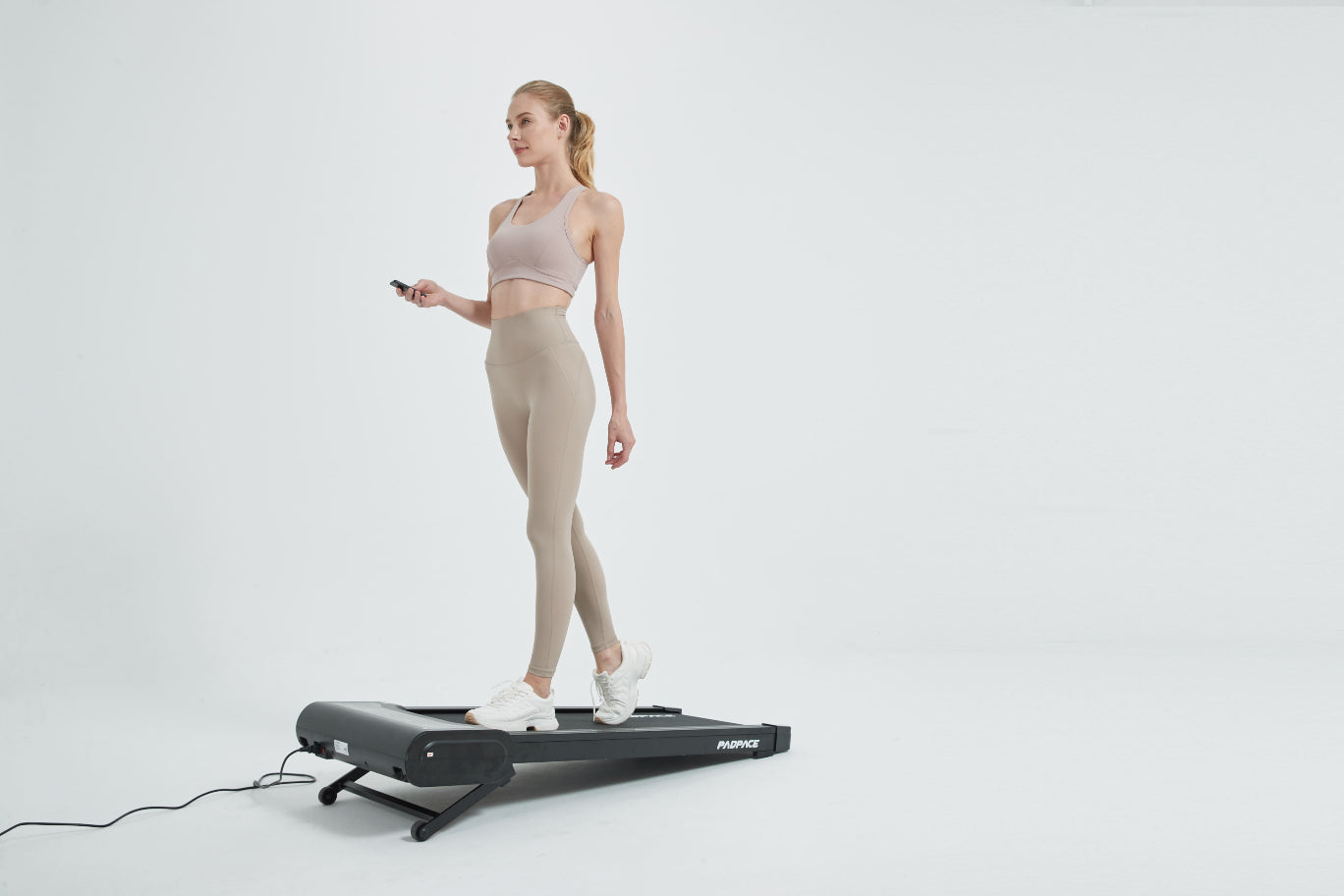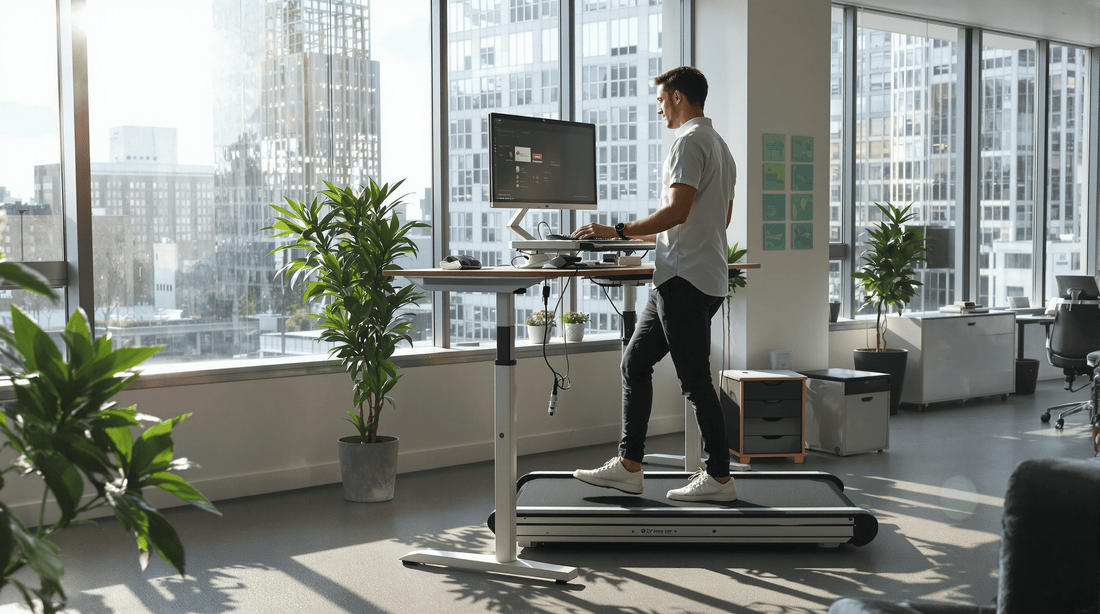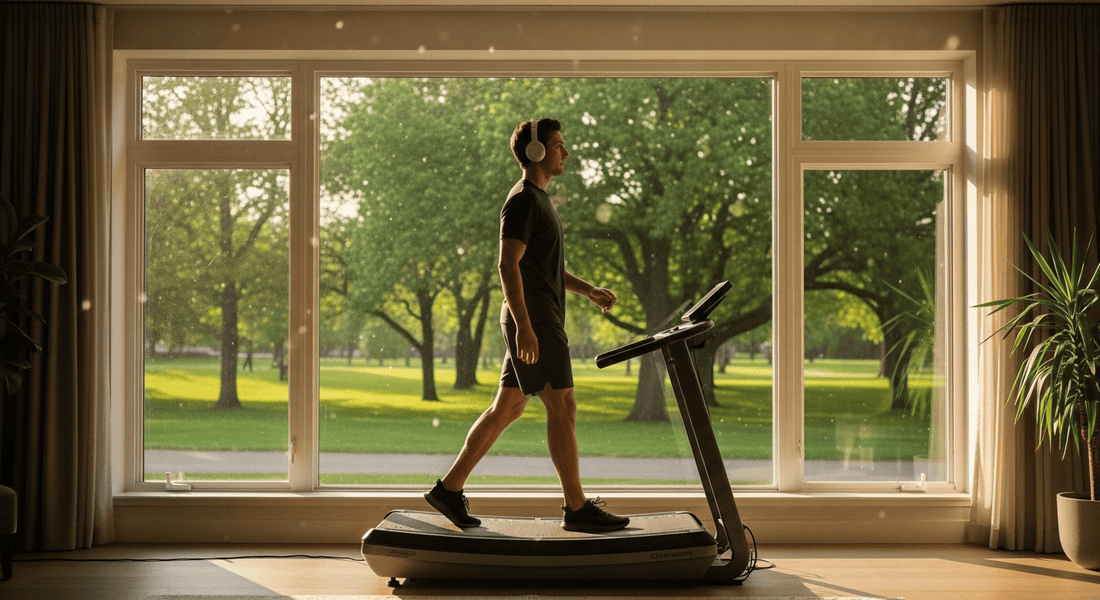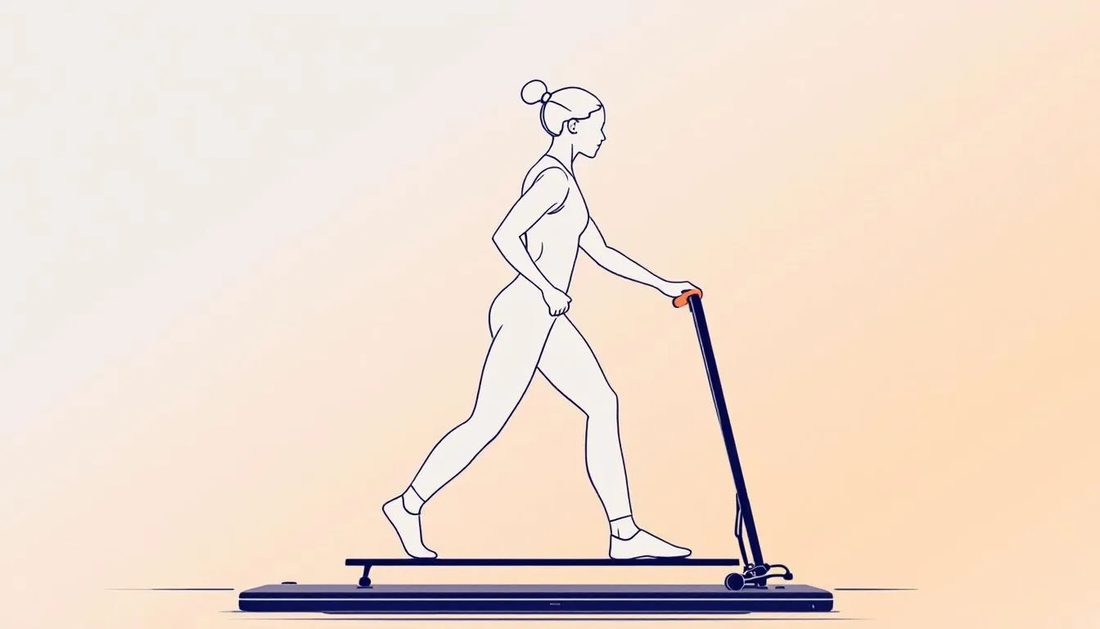Why Walking Pads
Improved Physical Health
Walking pads provide a convenient and efficient way to incorporate physical activity into your daily routine, promoting cardiovascular health, aiding in weight management, and reducing the risk of chronic diseases such as diabetes and hypertension.
Enhanced Productivity and Focus
Walking while working can boost productivity and focus. Studies have shown that light physical activity, such as walking, can increase blood flow to the brain, enhancing cognitive function and concentration.
Reduced Stress and Improved Mood
Combat stress and boost your mood with regular walking sessions on a walking pad. Physical activity releases endorphins, which are natural mood elevators, helping to reduce anxiety and promote a sense of well-being.
PadPace Walking Pad
Transform your workspace into a wellness zone with PadPace. Quietly burn calories, boost your energy, and elevate productivity—all from the comfort of your desk.
Perfect for: Remote workers, fitness enthusiasts, and professionals looking to seamlessly blend movement into daily tasks.
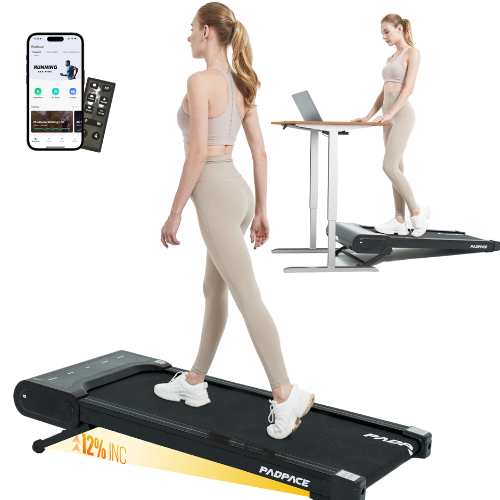
Auto Incline up to 12%
Auto Incline up to 12%
Enhance your calorie burn and fitness routine effortlessly.
Adjustable Speeds up to 5 mph
Adjustable Speeds up to 5 mph
Tailor your pace for comfortable walking or brisk exercise sessions.
Integrated Display & FitShow App
Integrated Display & FitShow App
Easily control your treadmill and monitor your steps, calories, speed, and workout progress directly from the intuitive touchscreen display, remote or the convenient FitShow mobile app.
Advanced Shock-Absorbing Design
Advanced Shock-Absorbing Design
Engineered for smooth, gentle impact on joints, providing a comfortable, low-impact walking experience suitable for prolonged use, even during calls or meetings
Why PadPace
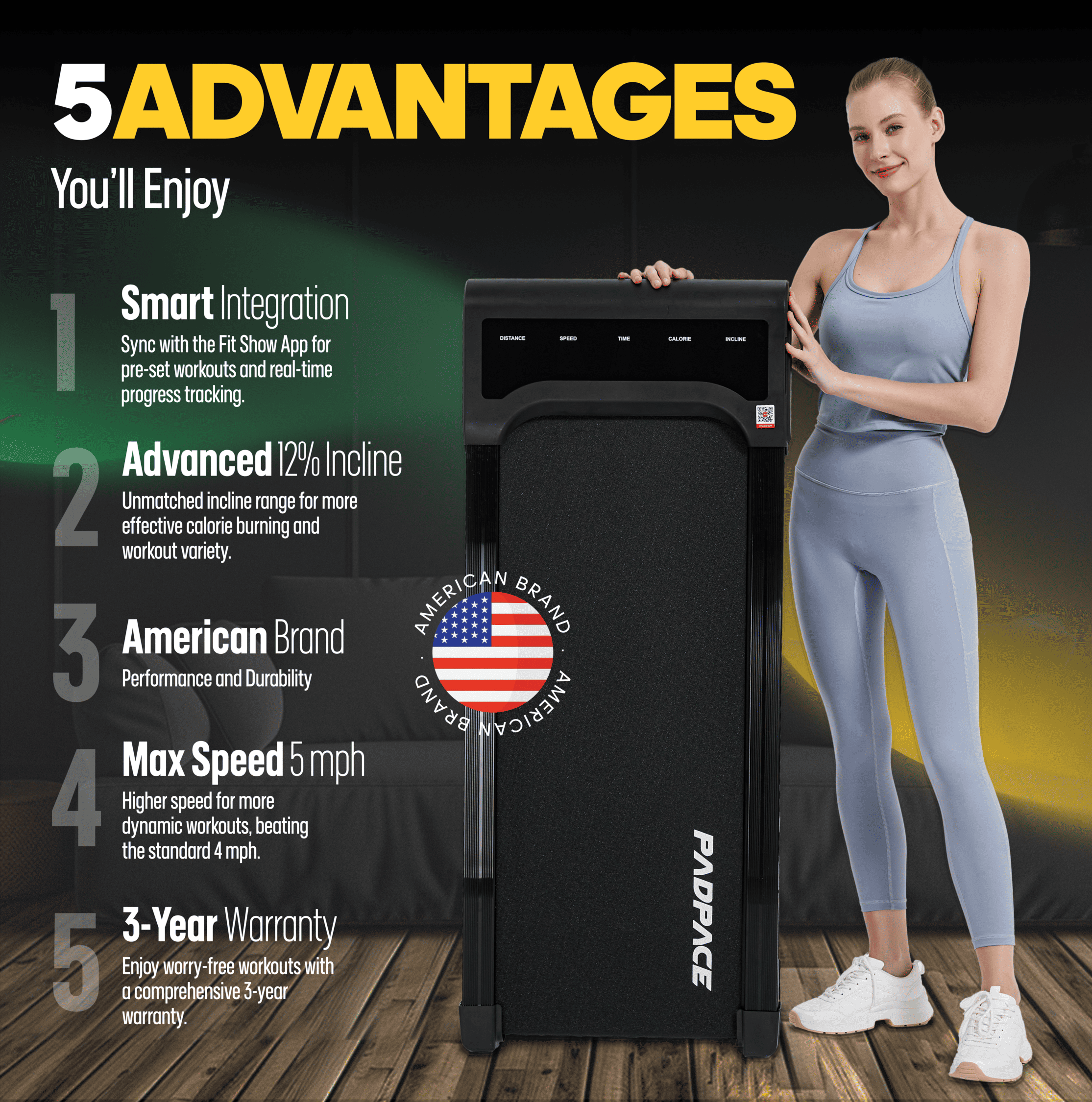
Move More, Achieve More
Unlock your potential with PadPace—engineered for versatility, whether you're walking, running, or training. Experience premium performance at every pace, right from home.
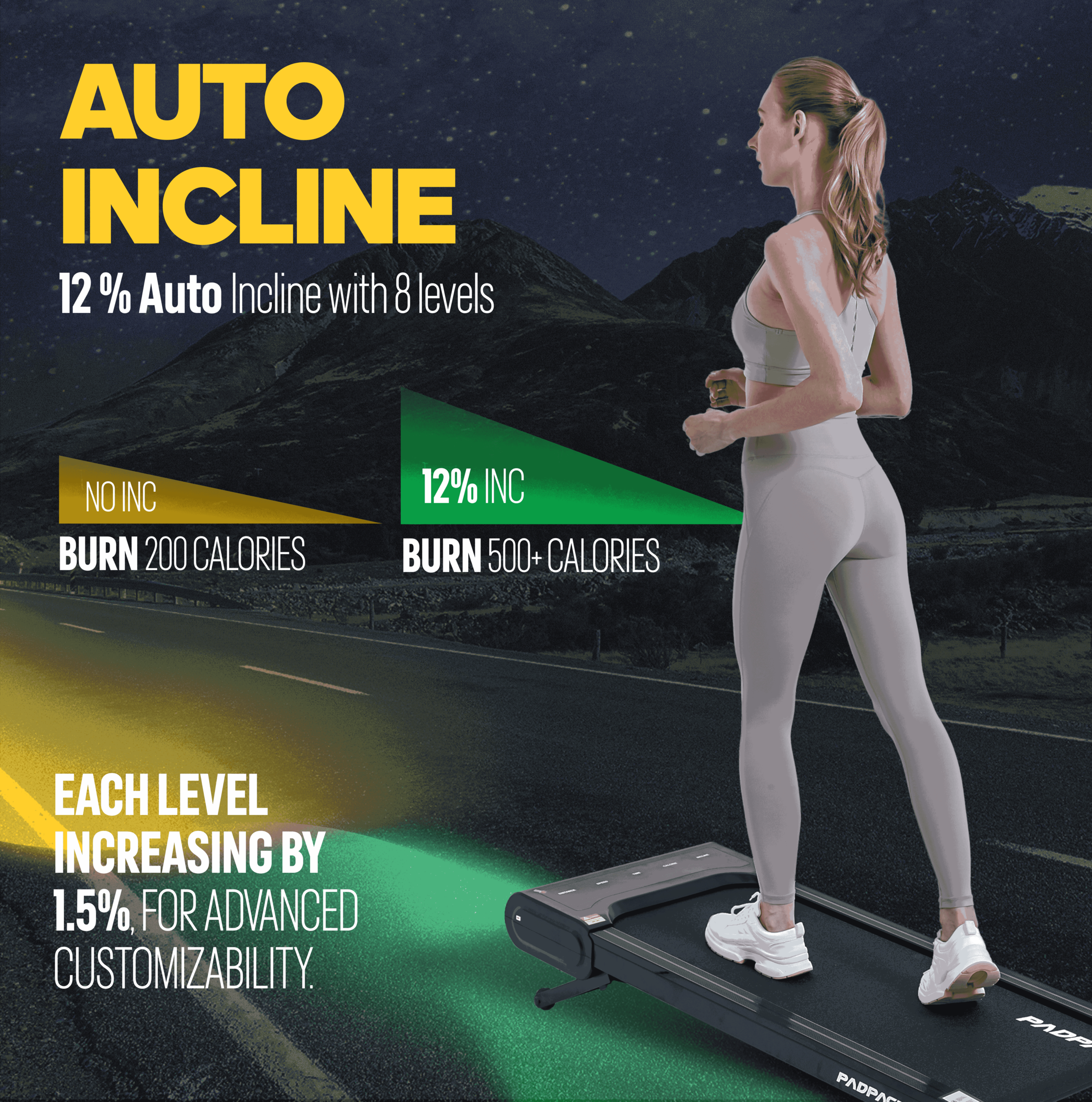
Reach New Heights with 12% Auto Incline
Level up your fitness journey with PadPace’s innovative incline technology. Burn more calories, customize your workouts, and push your limits with ease.
Our Values
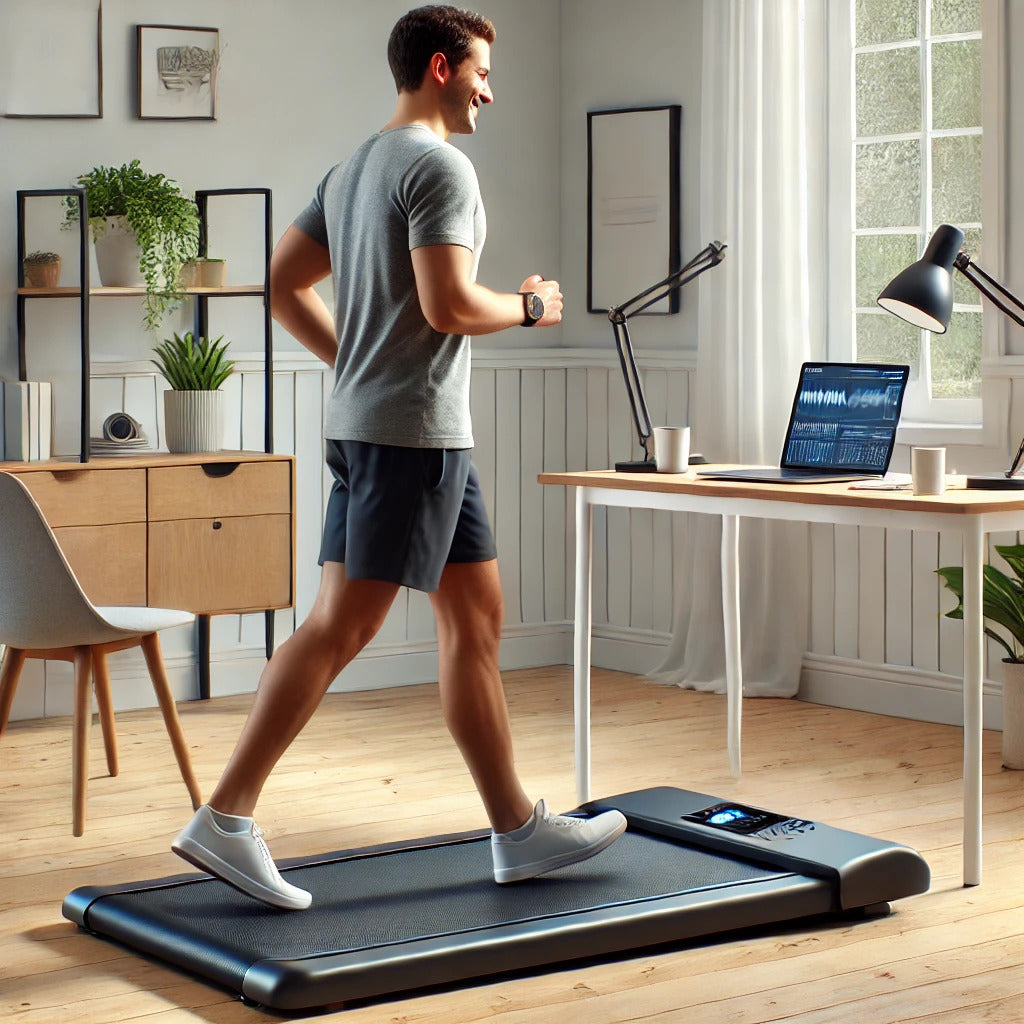
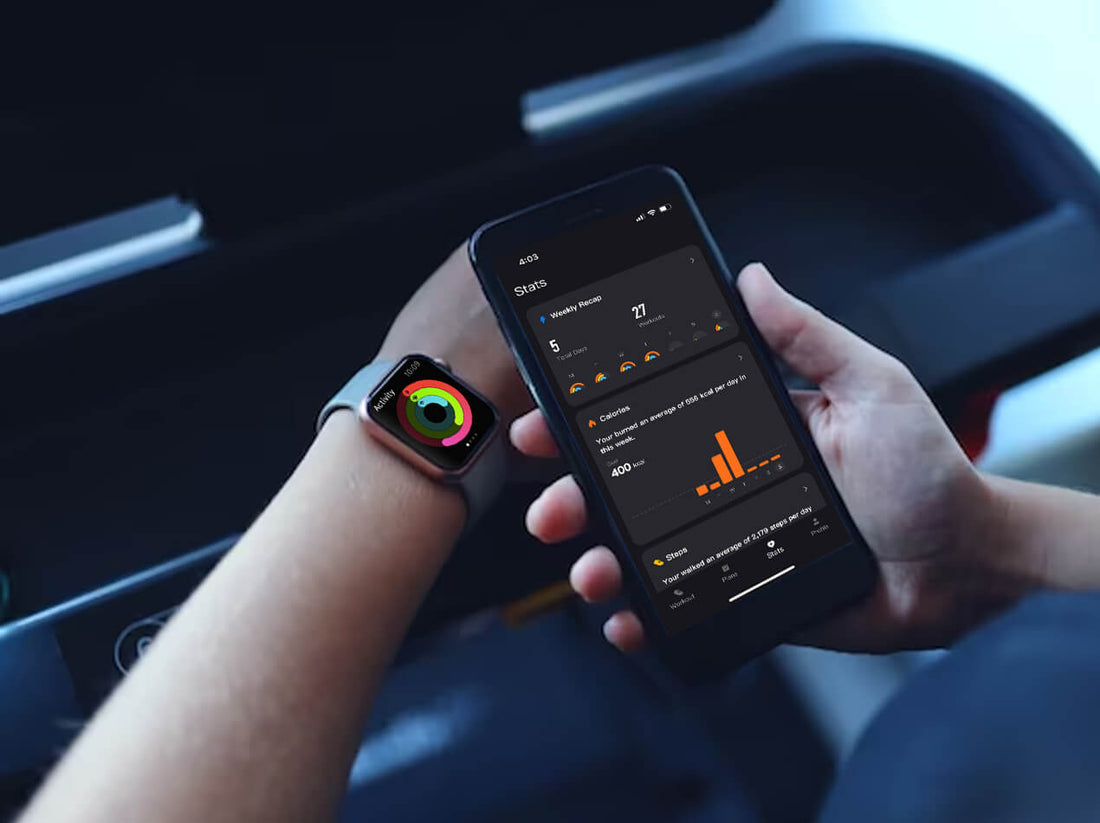

Blog posts
The Science Behind Walking While Working: What Research Says
Imagine getting your steps in while finishing a report, catching up on emails, or attending a Zoom meeting. For many remote workers, that’s now a reality—thanks to the rising popularity of walking pads and treadmill desks. But what started as a quirky work-from-home trend has sparked real scientific interest. Researchers have been asking: Can walking while working actually help us focus better, feel better, and even perform better at our jobs? Phil Haacks' blog post highlights the health risks of sitting and the benefits of walking while working, providing further insight into why this trend is gaining traction. The short answer is yes—and the long answer is fascinating. Let’s explore what science reveals about walking while working and why it might be one of the simplest ways to upgrade your daily workflow. From Sedentary to Stimulated: A Shift in How We Work We’re sitting more than ever—often 9+ hours a day—and it’s taking a toll on both body and mind. Both offices and house environments are seeing a shift toward more active workstations, as people look for ways to reduce sedentary time. While standing desks helped start the movement (literally), walking desks have taken it a step further. Light-intensity walking at the desk isn’t just good for breaking up sedentary time. Taking more steps throughout the workday can help people lose weight and experience improved mood and more energy. According to a growing body of research, it may also enhance cognitive function, regulate mood, and boost energy levels without compromising work performance. Equipment Options: Gearing Up for Movement at Your Desk Choosing the right equipment is key to making movement a natural part of your workday. For many, a standing desk is a great first step, allowing you to alternate between sitting and standing to break up long periods of inactivity. If you’re ready to take it further, desk treadmills offer the ability to walk at a gentle pace while tackling tasks like data entry, phone calls, or even creative brainstorming. Desk treadmills come in a range of styles, from compact walking pads that slide under your existing desk to full-featured treadmill workstations with adjustable heights and built-in controls. No matter which setup you choose, both standing desks and treadmill desks can help increase your daily physical activity, boost energy, and contribute to more calories burned throughout the workday. By finding the right equipment for your needs, you’ll be well on your way to a healthier, more active work routine. Cognitive Function: Does Walking Hurt Your Focus? One of the biggest concerns people have is whether walking distracts from deep work. A clinical study by the Mayo Clinic put this to the test. Participants rotated between sitting, standing, and walking desks while performing tasks that measured reasoning and concentration. The results? No drop in performance. In fact, some scored better while walking slowly on a treadmill (Mayo Clinic News, 2024). One study found, in a meta-analysis of 18 studies, that while walking may slightly reduce typing speed (a marginal difference), it enhanced memory recall—suggesting the brain stays sharp, or even sharper, when we’re in motion (Journal of Physical Activity and Health). Researchers used detailed notes, including interview transcriptions and coding processes, to thoroughly document and analyze the data collected in these studies. Stress and Focus: Walking Calms the Chaos We often try to solve stress with breaks, coffee, or quick scrolls on our phones—but it turns out, a slow walk might be far more effective. Using EEG scans and cortisol testing, researchers found that walking desks help regulate stress hormones and improve attention during the day. In one trial, participants walking at just 1.5 mph maintained full focus while performing complex cognitive tasks (Applied Ergonomics). Rather than overstimulating the brain, walking seems to create a rhythmic state that lowers mental tension and sharpens awareness—a sweet spot for focused work. Physical Perks Without the Sweat Of course, one of the more obvious benefits is physical activity. But the unique value of walking while working is that it doesn't demand a wardrobe change or a gym session. A meta-analysis involving over 350 participants found that treadmill desks increased energy expenditure by an average of 105 calories per hour and reduced sitting time by more than an hour each day (Journal of Occupational Health). This light movement improves blood flow, posture, and metabolism—all while you’re catching up on spreadsheets. Mood, Motivation & Mental Well-Being If you’ve ever taken a short walk to “clear your head,” you already know how effective it can be. But when walking becomes part of your actual workday, those mental benefits compound. In a study published in PLOS One, treadmill desk users reported better mood, less stress, and more motivation compared to those using standing desks. The combination of movement and task engagement appeared to create a more positive work experience overall (PLOS One Study, 2022). Some people also find extra motivation by tracking their activity and competing with friends, which can further boost mood and engagement. It’s not just about being productive—it’s about feeling better while doing it. What About Learning and Memory? Some worry that multitasking between walking and working could hurt learning or long-term retention. Fortunately, the research doesn’t support that concern. A 2015 cognitive study tested learning and memory while walking and found only a minor dip in task speed—but no impact on memory recall or comprehension later on (Cognitive Psychology, 2015). So, whether you're reading emails or writing reports, your brain keeps up just fine. Why It Works: The Brain-Body Connection On a biological level, walking helps regulate systems tied to stress, attention, and emotion. Moderate aerobic movement—even slow walking—boosts levels of BDNF (Brain-Derived Neurotrophic Factor), a key protein for memory and cognitive performance. It also increases IGF-1 and VEGF, which promote neuroplasticity and brain repair (Cotman et al., Neuroscience Reviews). These compounds help explain why walking can feel like mental fuel: It’s literally nourishing your brain. Safety Considerations: Walking Smart, Working Safe While adding movement to your workday brings plenty of health benefits, it’s important to prioritize safety to avoid unnecessary risks. When using a treadmill desk, always start at a slow speed and gradually increase your pace as you become more comfortable. Wearing supportive running shoes can help protect your feet and joints, and placing your treadmill on a flat surface ensures stability during your walks. Taking regular breaks to rest and stretch is essential, especially during long periods of walking. This helps prevent fatigue and gives your body a chance to recover. It’s also worth noting that walking at your desk can be a great way to stay active during the winter months, when outdoor exercise might not be practical. By staying mindful of your surroundings, keeping your workspace clutter-free, and listening to your body, you can enjoy the benefits of walking at work while minimizing the risk of accidents or discomfort. Who Should Avoid Walking While Working? While walking at work is a fantastic option for many, it’s not the right fit for everyone. Individuals with certain medical conditions—such as balance disorders, severe joint pain, or heart rate concerns—may be at increased risk of injury or discomfort when using a treadmill desk. If your work tasks require intense focus or precision, you might also find that walking distracts from your ability to concentrate. It’s important to note that anyone with health concerns or a history of falls should consult with a healthcare professional before starting a walking routine at their desk. By being aware of your own limitations and the demands of your job, you can make an informed decision about whether walking while working is the best choice for you. The Role of Mindset: Setting Yourself Up for Success Success with walking at work starts with the right mindset. Setting realistic goals—like aiming to walk for a certain amount of time each day or week—can help you build a sustainable routine. Tracking your energy expenditure and progress can keep you motivated, especially as you notice improvements in your energy and well-being throughout the workday. To make walking more enjoyable, try listening to your favorite music or podcasts, or use the time for creative thinking and problem-solving. By focusing on the positive impact walking has on your mood and productivity, you’ll be more likely to stick with your routine. Remember, consistency is key—celebrate your progress and stay committed to your goals, and walking at work will soon become a rewarding part of your daily life. Tracking Progress: Measuring Your Movement Milestones Keeping track of your movement is a powerful way to stay motivated and see the benefits of walking at work. Using a fitness tracker, pedometer, or smartphone app, you can monitor your distance walked, calories burned, and overall energy expenditure throughout the day. Setting personal milestones—like increasing your daily step count or walking a certain distance each week—can help you stay focused and energized. Regularly reviewing your progress not only highlights your achievements but also helps you identify areas for improvement. Whether your goal is weight loss, improved fitness, or simply feeling more energized during the workday, tracking your movement can provide the encouragement you need to keep going. Celebrate your successes, learn from any setbacks, and enjoy the journey toward a healthier, more active work life. How to Make It Work for You It’s important to start walking gradually, as beginning a new treadmill workstation routine can be challenging, especially for those not used to moving while working. You don’t need to walk for hours to reap the benefits. Based on the research, here’s a sustainable walking-while-working strategy: Start slow: 10–15 minutes at 1–1.5 mph (1.6–2.4 km/h). Each person should find the pace and duration that works best for them. Alternate: Walk for 30 minutes, then sit for 30. Some people prefer a setup where the user sits for part of the time to maximize comfort. Pair it with tasks: Use walking time for emails, calls, or brainstorming Stay ergonomic: Adjust desk height, wear proper shoes, and take breaks The only complaint some users mention is the adjustment period when they first start walking at their desk, but this usually improves with time. Consistency matters more than intensity. Even a few short sessions throughout the day can lift your mood and keep your energy stable. Final Thoughts: The Case for Movement at the Desk Walking while working is no longer just a niche productivity trend—it’s a science-backed upgrade to how we live and work. The evidence is clear: walking desks don’t harm performance. Instead, they enhance mood, stabilize energy, and support long-term cognitive health. In a world where burnout and stress are the norm, this simple shift in how we work could be one of the most underrated wellness moves you make. So, next time you're stuck in a rut or battling the afternoon slump, step onto your walking pad and let science—and your body—carry you forward.
Learn moreHow to Perfect Your Walking Pad Posture for Better Health
Good posture on a walking pad prevents strain and improves health, especially when focusing on walking pad posture. This article covers how to maintain proper posture, its benefits, and practical tips for your routine. Key Takeaways Good posture is essential for overall health, preventing physical strain and enhancing cognitive performance, which walking pads facilitate through regular movement. Integrating walking pads into daily routines mitigates health risks associated with prolonged sitting by promoting continuous movement and proper alignment. An ergonomic setup, including proper desk height and supportive footwear, is crucial for effective use of walking pads to ensure comfort and maintain good posture. The Importance of Good Posture Good posture is more than just standing up straight; it’s a crucial component of overall physical health and well-being. Maintaining good posture can prevent physical strain and boost cognitive performance, allowing you to perform daily tasks more efficiently. Moreover, good posture helps in preventing physical strain, leading to improved mental clarity. Walking pads help improve posture by boosting physical activity and encouraging regular movement. This is particularly important in today’s sedentary lifestyle, where prolonged sitting can lead to various health issues. An upright stance with relaxed shoulders brings numerous health benefits, such as reduced neck strain and improved overall well-being. Understanding Proper Posture Proper posture refers to the way we position our bodies. This can occur while: standing sitting lying down Maintaining proper posture during these activities helps avoid physical strain and promotes good health. Walking pads encourage regular walking and promote proper alignment, which helps maintain good posture. Maintaining good posture involves keeping your shoulders relaxed and your spine aligned. This can be achieved through gentle movement and regular adjustments to your walking routine. Tips for good posture include using an ergonomic setup and adding regular movement to your routine. A walking pad encourages an upright stance and continuous movement, significantly improving posture. This not only helps prevent neck strain and other physical discomforts but also promotes a healthier, more active lifestyle. Health Risks of Poor Posture Poor posture can lead to numerous health risks, including: Chronic issues such as back pain, headaches, and gastrointestinal problems Nerve compression and reduced mobility, making everyday activities more challenging Increased pressure on the spine, resulting in discomfort and potential long-term damage Compression of abdominal organs, which can cause digestive issues Maintaining proper posture helps avoid these health risks, leading to improved overall health and well-being. Adding a walking pad to your routine can mitigate these risks by promoting an upright stance and regular movement. This not only helps prevent physical strain but also encourages better posture and overall health, which can help reduce stress. How Walking Pads Improve Posture Using a walking pad offers a unique way to enhance posture and supercharge productivity by integrating movement into daily routines. Benefits of walking pads include: Encouraging movement throughout the day, helping to counteract the negative effects of prolonged sitting Promoting an upright posture Significantly reducing back pain and related symptoms Consistent use of walking pads promotes proper alignment and flexibility, improving spinal health. This continuous movement helps maintain proper posture and prevents the physical strain associated with prolonged sitting. Most walking pads are designed to encourage a consistent walking routine, which is essential for better posture and overall health. Engaging Core Muscles on a Walking Pad Good posture involves an upright position where the spine is aligned, which supports proper body function throughout daily activities. Walking pads engage abdominal and back muscles, stabilizing the spine and activating the core. Proper form while using a walking pad includes keeping shoulders back and tightening the abdomen, which enhances core engagement. Regular use of a walking pad strengthens core muscles, contributing to better overall posture. By maintaining an upright stance and engaging your core, you can improve your posture and reduce the risk of back pain and other related issues. Encouraging Continuous Movement Walking pads effectively help reduce the health risks associated with prolonged sitting, commonly termed as ‘sitting disease’. Regular walking in short sessions throughout the day can: Help lower blood pressure Manage blood sugar levels Gentle, continuous movement encouraged by walking pads is essential for: Maintaining flexibility Proper posture Improving blood circulation Alternating between walking and standing on a walking pad boosts cardiovascular fitness, burns more calories, and increases stamina and endurance. Interval walking improves oxygen delivery to muscles, burns more calories, and enhances stamina. Short walking sessions during the day can help offset the impact of long periods of sitting. They are beneficial for maintaining flexibility. Walking during tasks offers several benefits: Keeps the mind engaged and helps achieve daily step goals. Combining walking and standing can optimize productivity by aligning walking sessions with tasks. Provides low-impact exercise, which is beneficial for individuals suffering from back pain. Setting Up Your Walking Pad for Optimal Posture An ergonomic setup maintains good posture on a walking pad, ensuring comfort and reducing strain. Key recommendations include: Adjust the height of your walking pad so that the screen is at eye level. Ensure your elbows are at a 90-degree angle while walking. Wear supportive shoes to prevent foot and leg strain during walking pad sessions. An ergonomic setup and proper footwear enhance your experience and help maintain good posture on a walking pad. By following these tips, you can ensure that your walking pad sessions are both comfortable and effective. Choosing Supportive Shoes It’s essential to wear supportive footwear to prevent injury while using a walking pad. Supportive and cushioned shoes are recommended for use with a walking pad. High heels and unsupportive footwear should be avoided when using a walking pad. Best Practices for Maintaining Proper Posture on a Walking Pad Consistency matters more than intensity in walking pad workouts for effectively maintaining good posture. Walking pads help users maintain a consistent pace and proper form, minimizing risks while exercising. It’s important to incorporate regular breaks while using a walking pad to preserve energy and prevent overexertion. Bodyweight exercises like walking planks enhance core strength, supporting better posture with walking pad use. A variety of exercises, including stretching and strength training, greatly enhance the benefits of using a walking pad. Incorporating exercises like side shuffles can enhance lateral strength and balance during walking pad sessions. Starting at a Comfortable Pace The recommended starting speed for using a walking pad treadmill is between 2-3 mph to ensure a manageable start. Pushing yourself too hard on a walking pad can lead to pain or fatigue, making it essential to start at a slow pace. To increase your walking speed on a walking pad safely, you should gradually increase speed in small increments of 0.5 mph. Beginners should start with shorter, moderate-paced walks to build endurance. Maintain proper posture to prevent strain. Focusing on Form Maintaining good form while using a walking pad involves: Keeping shoulders back and abs tight to enhance core engagement Engaging your core muscles while walking for proper posture Having your back straight and shoulders relaxed Prioritizing proper posture is fundamental for an effective walking experience. Proper walking technique influences efficiency and minimizes the risk of strain or injury. Maintaining the correct posture maximizes ergonomic advantages. It also helps in reducing discomfort. Integrating Walking Pads into Daily Routines A walking pad combats a sedentary lifestyle by promoting movement throughout the day. Regular walking on a pad can lead to improved cardiovascular health and weight management. Users noted that the convenience of a walking pad allows them to maintain an active lifestyle, even during busy workdays. Placing a walking pad in a frequently used area increases the likelihood of regular use. Users report that incorporating a walking pad into daily routines helps achieve step goals without leaving home, making it a valuable addition to any exercise regimen. To use a walking pad, start walking with these practical tips for maximizing its use. Short breaks during walking pad sessions are vital to avoid fatigue and maintain energy levels. Many users have shared that using a walking pad during work hours improved their focus and productivity. Short Walking Sessions Short walking sessions of 5 to 10 minutes every hour significantly enhance energy levels and overall focus. These sessions combat sedentary behavior, increase daily step counts, and promote better overall wellness at work. Regular short walking breaks refresh both mind and body, maintaining productivity throughout the day. Walking sessions during tasks like virtual meetings or brainstorming help maintain consistent more movement. Gradually increasing walking frequency, such as taking short sessions every hour, encourages a daily routine that incorporates an exercise routine into daily activities. Adapting to a walking pad for work tasks involves: Starting with shorter walking pad treadmill sessions of around 10-15 minutes. Gradually incorporating longer periods as comfort and endurance build. Listening to your body during walking sessions and adjusting duration or intensity based on comfort. Combining with Other Activities Using a walking pad during mundane tasks enhances overall focus and productivity. Activities requiring minimal concentration, like listening to podcasts or taking calls, work well on a walking pad. By integrating a walking routine with other daily activities, you can maintain an active lifestyle without sacrificing productivity. Keeping wrists straight while typing avoids strain during walking pad sessions. Walking with other activities makes the process enjoyable and less monotonous, ensuring consistent use and better health. Complementary Exercises for Better Posture Complementary exercises and practices that enhance back health alongside walking pad use include: Stretching Strength training Ergonomic improvements in your workspace Mindfulness in your workspace These activities also benefit overall posture and well-being. Wearing shoes with adequate arch support is crucial to prevent discomfort during sessions on a walking pad. Footwear that provides good cushioning can help mitigate the impact on joints while using a walking pad. Stretching Routines Daily stretching routines alleviate tension and enhance flexibility, especially in muscles used for walking. Stretch calves, hamstrings, and hip flexors to avoid stiffness before and after walking. Daily stretches for the upper back and neck pain alleviate tension from prolonged walking pad use. Yoga poses like cat-cow and child’s pose during stretching significantly support back health. Strengthening Exercises Strength training exercises are crucial for improving posture and preventing discomfort. Core engaged stability exercises like planks and bird dogs support overall posture. Resistance bands during strength training effectively target and strengthen back muscle groups for improved posture. By combining these exercises with your walking routine, you can achieve a balanced and effective fitness regimen. Safety Tips for Using Walking Pads Consult a doctor before using a walking pad, especially if you have pre-existing conditions. Walking pads should have safety features like anti-slip surfaces and emergency stop buttons. Proper setup and ongoing maintenance ensure safety while using a walking pad. Walking pads are generally safe, being low-impact and allowing for pace control. Stay hydrated on a walking pad to prevent dehydration and maintain cognitive function. Anti-fatigue mats significantly improve comfort during extended walking pad sessions. Place walking pads on a stable, flat surface free of obstacles to minimize risks. Recognizing Safety Risks Distractions can lead to slips or falls, so focus is needed while using a walking pad. Ignoring discomfort can result in long-term injuries or complications. If discomfort occurs, adjust walking pace, posture, or intensity. Follow manufacturer guidelines to prevent safety hazards. Start small, stay consistent, and prioritize safety for effective walking pad use. Exercise caution during multitasking on a walking pad, avoiding activities needing intense focus. Neglecting setup and maintenance can compromise stability and lead to safety hazards. Regular Maintenance Regularly check for tight screws and bolts to prevent mechanical failures. Clean the walking pad belt after every use for optimal performance. Regular maintenance is crucial for keeping the walking pad in optimal condition and ensuring longevity. Proper maintenance enhances the performance and reliability of the walking pad, improving user experience. User Experiences and Testimonials Users report the following benefits from using walking pads: Improved posture Reduced back pain Increased energy Improved focus Sarah experienced nearly complete relief from chronic lower back pain and noticed increased energy and focus after using the walking pad. Emily’s back pain disappeared, and she even lost a few pounds using the walking pad. Users find walking on a pad helps them feel more energized throughout the day. Selecting the Right Walking Pad for You Walking pad weight capacity varies, so select one that can safely support all potential users. The typical weight capacity for most walking pad models ranges from 220-300 pounds. Check the belt size if you are taller or wish to run; longer belts provide more room for comfortable movement. Evaluate the footprint of a walking pad to ensure it fits well in your intended space. Noise level is crucial for walking pads, especially in shared spaces or during calls. Many walking pads are designed for easy storage, with some featuring space saving design and foldable designs for compactness. Choosing the right walking pad ensures comfort, safety, and usability during your sessions. Summary In summary, perfecting your walking pad posture is essential for better health and overall well-being. By understanding the importance of good posture, setting up your walking pad ergonomically, and incorporating complementary exercises, you can enjoy the numerous health benefits that come with using a walking pad. Remember to prioritize safety and maintenance to ensure a long-lasting and effective experience. Embrace this active lifestyle change and take the first step towards better health today. Frequently Asked Questions How do walking pads improve posture? Walking pads improve posture by encouraging continuous movement and engaging core muscles, which promotes proper alignment and reduces back pain. What are the health risks of poor posture? Poor posture significantly increases the risk of chronic back pain, headaches, digestive issues, and decreased mobility. It's essential to maintain good posture for overall health and well-being. How can I set up my walking pad for optimal posture? To achieve optimal posture while using your walking pad, adjust your desk height so that your screen is at eye level and wear supportive shoes. This ergonomic setup will help maintain good posture during your walk. What complementary exercises can help improve posture? To improve posture, focus on stretching your calves, hamstrings, and hip flexors while also incorporating strengthening exercises like planks and bird dogs. These complementary exercises will enhance your overall alignment and stability. What safety tips should I follow when using a walking pad? To ensure your safety while using a walking pad, prioritize proper setup, stay hydrated, and consider using anti-fatigue mats. Regular maintenance of the equipment is also essential for continued safe usage.
Learn more5 Creative Walking Pad Workouts You Can Do (Besides Just Walking)
The beauty of a walking pad—also called an under‑desk treadmill—is its versatility. Yes, steady walking is great for daily steps, but you can unlock far more fitness benefits by mixing in creative exercises that challenge different muscle groups and energy systems. To get started, begin with short, manageable sessions to safely ease into creative walking pad workouts. Below are five research‑backed, low‑impact walking‑pad workouts you can safely add to your routine—ideal for apartment dwellers, busy professionals, or anyone looking to fight workout boredom. Quick Safety Notes Start Slow: Try each move at 0.5–1 km/h first. Use Stable Support: Keep desk rails or safety handles within reach. Footwear Matters: Cushioned sneakers reduce joint impact. Warm‑Up & Cool‑Down: 3–5 minutes of gentle walking before and after each session. Why Use a Walking Pad? Key Benefits for Your Body and Mind A walking pad isn’t just a convenient piece of fitness equipment—it’s a game-changer for your overall health and well-being. By adding a walking pad to your daily routine, you can experience a significant impact on both your body and mind. Regular use helps improve cardiovascular health, supports weight management, and increases calorie burn, all while fitting seamlessly into your lifestyle. Whether you prefer a brisk walk or a light jog, walking pads make it easy to stay active throughout the day, even when you’re answering emails or attending virtual meetings. Unlike traditional gym sessions or outdoor runs, a walking pad allows you to exercise in the comfort of your home or office, making it an effective option for busy schedules. You can squeeze in a quick walk or jog during work breaks, helping you maintain a consistent routine and support your long-term health goals. With every step, you’re not just moving your body—you’re boosting your mood, sharpening your focus, and investing in your overall health. 1. Calf‑Raise Intervals Targets: Gastrocnemius & soleus (calf muscles), Achilles flexibility Setting Speed Sets × Reps Flat belt 0.8 km/h 3 × 20 raises Walk normally for 60 seconds. Grip the desk lightly, rise onto tiptoes, hold 2 seconds, lower slowly. Repeat 20 reps, then resume normal walking for 60 seconds. Complete 3 rounds. Why it works: Calf raises boost ankle stability and improve stride efficiency—perfect for runners and high‑heel wearers alike. 2. Backward Walking Drills Targets: Quadriceps, glutes, knee stabilisers; enhances proprioception Setting Speed Duration Flat belt 0.5–0.8 km/h 5 minutes total Switch the belt on at a very low speed. Stand facing the console, then carefully turn 180°. Keep a soft bend in your knees and land on the balls of your feet. Swing arms gently for balance; focus on upright posture. Maintaining good posture during backward walking drills is important to prevent strain and support proper body alignment. Progression Tip: Gradually lengthen backward‑walking intervals to 10 minutes to improve knee‑joint health and functional mobility. 3. Power‑Walking Intervals Targets: Cardiovascular fitness, calorie burn, hip extensors Work Interval: 5 km/h for 60 seconds Recovery: 3 km/h for 90 seconds Rounds: 10 (approx. 25 minutes total) This workout uses interval training to alternate between high intensity bursts and recovery periods. After warming up, crank speed to 5 km/h (or 80 % of your max) to increase the speed, raise your heart rate, and reach a high intensity zone. Pump your arms vigorously, driving elbows back. Drop speed to recovery pace; walk at a moderate pace to allow your heart rate to recover. Repeat for 10 rounds. Why it works: Interval training with high intensity bursts and moderate pace recovery elevates post‑exercise oxygen consumption (EPOC), helps improve heart rate control, and boosts overall fitness, meaning you keep burning calories even after hopping off the pad. 4. Side‑Step Shuffles Targets: Lower body muscles including hip abductors, adductors, glute‑medius—key for knee stability Setting Speed Sets × Duration Flat belt 0.6 km/h 4 × 45 sec each side Reduce speed below 1 km/h. Turn sideways; feet parallel to belt edge. Step laterally, leading with the uphill foot and staying low in a mini‑squat. Repeat 45 seconds, then turn to the opposite side. Safety Tip: Keep knees tracking over toes; avoid letting them cave inward. 5. Incline Push Walk (Bonus for PadPace Owners) Incline walking is one of several effective walking pad exercises, and a walking pad helps simulate uphill hiking to target the glutes, hamstrings, and posterior chain. Setting Incline Speed Duration 8–12 % PadPace’s auto incline 3 km/h 10 minutes Raise incline gradually to 8 %. Maintain brisk but controlled pace. Drive through the heel of the front foot for glute activation. Optional: Hold 1–3 kg dumbbells for an upper‑body pump. Maintain good posture and use proper form throughout to maximize benefits and prevent injury. Research Note: A 2024 Journal of Sports Medicine study found 10 minutes of 10 % incline walking boosts posterior‑chain muscle activation by 35 % compared with flat walking at the same speed. Incline walking can also help burn calories and support heart health. While traditional treadmills offer incline features for indoor workouts, walking pads provide a compact alternative for achieving similar benefits. Safety Tip: Always prioritize safety when increasing incline or speed. Upper Body Engagements: Creative Ways to Work Your Arms and Core Walking pads aren’t just for your legs—get creative and turn your walking pad workout into a full-body session by engaging your upper body. Try holding light dumbbells or resistance bands as you walk to activate different muscle groups in your arms and core. Simple exercises like arm circles, shoulder presses, or bicep curls can be performed while walking at a slow pace, increasing the intensity and helping you burn more calories. Focus on maintaining proper posture throughout your workout: keep your shoulders relaxed, core engaged, and avoid unnecessary strain on your neck and upper back. By mixing in these upper body exercises, you’ll challenge your body in new ways, target multiple muscle groups, and make your walking pad sessions even more effective. Remember, small changes to your routine can lead to big results—so don’t be afraid to mix things up and keep your workouts interesting! Yoga and Stretching Moves for Your Walking Pad Routine Enhance your walking pad routine by incorporating yoga and stretching exercises to improve flexibility, balance, and overall fitness. After your walk, step onto the stationary pad and try gentle yoga poses like downward-facing dog, warrior, or tree pose to stretch and strengthen your body. You can also perform targeted stretches for your calves, hamstrings, and hip flexors to help reduce muscle soreness and increase your range of motion. Start with slow, controlled movements and gradually increase the intensity and duration as your flexibility improves. Prioritize proper posture during each exercise, listening to your body and taking breaks as needed to rest and rehydrate. Adding these mindful movements to your routine not only supports your physical fitness but also helps you maintain balance and prevent injury, making your walking pad workouts even more rewarding. Sample Weekly Walking‑Pad Workout Plan Planning your workouts over the course of a week is essential for consistency and progress. Spreading your activity over several hours throughout the week, rather than relying on long single sessions, can be more manageable and effective for maintaining your routine and supporting overall health. Day Workout Total Time Mon Power‑Walking Intervals 25 min Tue Calf‑Raise Intervals + 15 min steady walk 25 min Wed Incline Push Walk 20 min Thu Backward Walking Drills + Side‑Step Shuffles 30 min Fri Choice: Favourite two drills 30 min Sat/Sun Light recovery walk or rest day 20 min Including rest days on the weekend is important for recovery and helps prevent overtraining. Use these rest days to allow your body to repair and recharge, ensuring you can maintain your workout routine week after week. Nutrition and Hydration Tips for Walking Pad Workouts Fueling your body properly is key to getting the most out of your walking pad workouts. Before you start walking, aim to eat a balanced meal or snack about an hour in advance—think complex carbohydrates for energy, lean protein for muscle support, and healthy fats for sustained fuel. During your pad workouts, keep a water bottle nearby and sip regularly to stay hydrated and replace lost fluids. After your workout, help your body recover by enjoying a nutritious meal or snack that includes protein and healthy carbs. This supports muscle repair and keeps your energy levels steady. Pay attention to how your body feels and adjust your nutrition and hydration habits as your workouts progress. With the right fuel and plenty of water, you’ll maximize the benefits of every session and keep making progress toward your fitness goals. Final Tips for Success Track Progress: Use the FitShow app (compatible with PadPace) to log speed, incline, calories, and distance. Mix & Match: Rotate exercises to avoid overuse injuries and keep workouts fresh. Take a Break: Use your walking pad as a break during the workday to reset your mind and body. Make It Fun: Incorporate enjoyable activities, such as listening to music or trying virtual walking tours, to make your workouts more engaging. Consult a Personal Trainer: For personalized walking pad workout guidance and safe exercise techniques, consider consulting a personal trainer. Prevent Neck Strain: Adjust your workspace setup, including desk and monitor height, to reduce neck strain during walking pad sessions. Add Short Bursts: Include short bursts of higher intensity walking to boost fitness and calorie burn. Hydrate & Stretch: Even low‑impact sessions require post‑workout care. Find Your Walking Pad Community: Support, Motivation, and Fun Staying motivated is easier—and a lot more fun—when you’re part of a supportive walking pad community. Connect with fellow walking pad enthusiasts through online forums, social media groups, or local fitness meetups to share your progress, swap tips, and celebrate milestones together. Being part of a community can help you stay accountable, inspired, and excited to reach your fitness goals. Many walking pad communities offer challenges, contests, and group events to keep your workouts fresh and engaging. Whether you’re just starting slowly or looking to take your pad workouts to the next level, having a network of like-minded people can make your daily routine more enjoyable and sustainable. Remember to set realistic goals, track your progress, and celebrate every achievement—big or small. With the right support and a positive mindset, you’ll find that walking pad workouts can become a fun, effective, and lasting part of your healthy lifestyle. Ready to Level‑Up Your Walking Pad? If you haven’t upgraded to the PadPace Walking Pad with 12 % auto incline and 300 lbs capacity, check it out here and unlock the full spectrum of workouts above—all from the comfort of your home office. Stay active, stay creative, and keep those steps interesting!
Learn more

